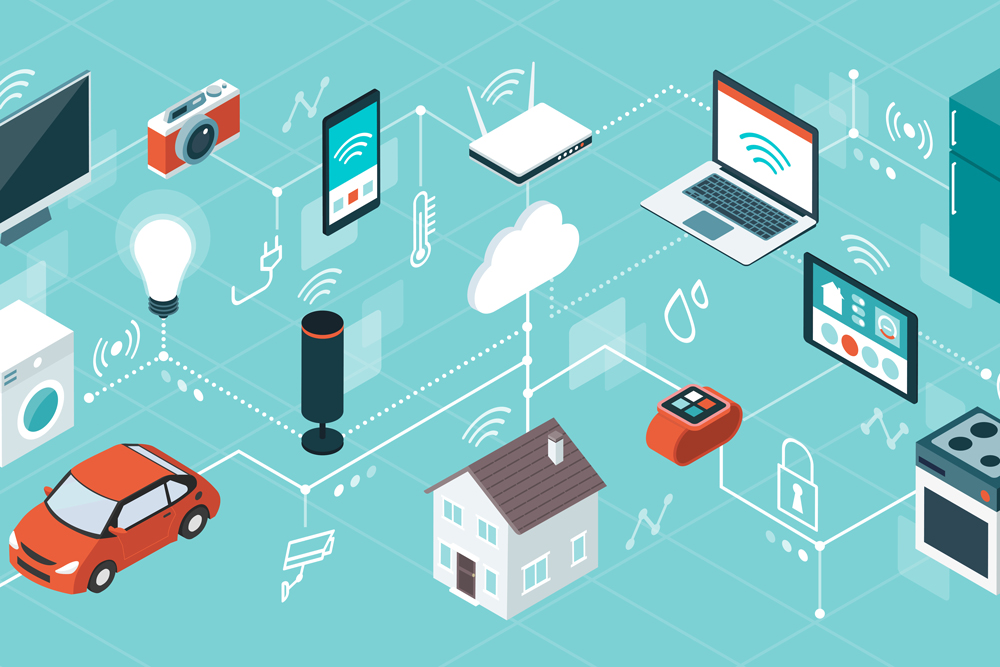The Internet of Things (IoT) revolution is transforming industries, enhancing consumer experiences, and enabling new business models. Central to this transformation are the iot networking protocols that allow various devices to communicate efficiently. Understanding these protocols is crucial for anyone involved in developing IoT solutions. This article provides an overview and comparison of the key IoT networking protocols, highlighting their features and use cases.
What are IoT Networking Protocols?
IoT networking protocols are the rules and standards that enable IoT devices to connect, communicate, and exchange data. These protocols ensure seamless interaction between devices, ranging from sensors and actuators to gateways and cloud platforms. The choice of protocol impacts the performance, scalability, security, and energy efficiency of an IoT network.
Key IoT Networking Protocols
MQTT (Message Queuing Telemetry Transport) MQTT is a lightweight, publish-subscribe network protocol designed for constrained devices and low-bandwidth, high-latency, or unreliable networks. It is highly efficient, making it ideal for applications like remote monitoring and control. MQTT’s simplicity and minimal resource requirements have made it one of the most popular IoT networking protocols.
CoAP (Constrained Application Protocol)
CoAP is a specialized web transfer protocol designed for use with constrained nodes and networks in IoT. It allows devices to communicate using a client-server model similar to HTTP but with significantly reduced overhead. CoAP is suitable for environments where low power consumption and minimal processing are critical, such as in smart homes and industrial IoT applications.
HTTP/HTTPS
HTTP and its secure version HTTPS are widely used protocols for transferring data over the web. In IoT, they are often used for device-to-cloud communication. While not as efficient as MQTT or CoAP for constrained devices, HTTP/HTTPS are favored for their compatibility with existing web infrastructure and security features.
Zigbee
Zigbee is a low-power, low-data-rate wireless mesh network protocol. It is designed for use in applications requiring secure, reliable communication over short distances, such as home automation and smart lighting. Zigbee’s mesh networking capabilities allow it to cover larger areas and support many devices in a network.
Z-Wave
Z-Wave is another low-power wireless communication protocol focused on home automation. It operates in the sub-1 GHz band, which helps avoid interference with other wireless devices. Z-Wave is known for its interoperability and ease of setup, making it a popular choice for consumer IoT products like smart locks and thermostats.
Bluetooth Low Energy (BLE)
BLE is a power-efficient version of Bluetooth designed for IoT applications. It is ideal for short-range communication and is commonly used in wearables, fitness trackers, and smart home devices. BLE’s low energy consumption extends the battery life of devices, making it suitable for applications where frequent battery replacement is impractical.
LoRaWAN (Long Range Wide Area Network)
LoRaWAN is a protocol designed for long-range, low-power communication. It is ideal for applications requiring extensive coverage, such as agricultural monitoring and smart cities. LoRaWAN’s ability to support a large number of devices with minimal power consumption makes it a key player in the IoT networking landscape.

Comparing IoT Networking Protocols
Performance
When evaluating performance, factors like latency, bandwidth, and power consumption are critical. MQTT and CoAP excel in environments with low bandwidth and high latency, while HTTP/HTTPS offer robust performance over stable, high-bandwidth connections. Zigbee and Z-Wave provide reliable performance in short-range networks, whereas LoRaWAN is optimized for long-range communication.
Security
Security is paramount in IoT networking. HTTPS offers strong security features, making it suitable for applications where data privacy is crucial. Zigbee and Z-Wave also include security protocols, though their implementations may vary by manufacturer. MQTT and CoAP can be secured with SSL/TLS to enhance their security.
Scalability
Scalability is essential for IoT networks expected to grow over time. LoRaWAN and Zigbee offer excellent scalability due to their support for large numbers of devices. MQTT’s lightweight nature also supports scalable deployments, while HTTP/HTTPS and CoAP are more suitable for smaller to medium-sized networks.
Conclusion
Choosing the right iot networking protocol depends on specific application requirements, including performance, security, and scalability. MQTT and CoAP are ideal for low-power, constrained environments, while HTTP/HTTPS is preferred for secure web-based communication. Zigbee and Z-Wave are excellent for home automation, and LoRaWAN is best for long-range applications. Understanding these protocols helps developers design efficient, reliable, and secure IoT solutions.
Hamza khan232 at June 26, 2024 at 11:10pm PDT
Debating between hiring a social media manager or using an smm panel provider. Any thoughts? Leaning towards the panel for its affordability, but unsure about the long-term impact.
Hamza khan232 at June 26, 2024 at 11:54pm PDT
Yes, AI is powerful, but human creativity is still crucial AI based social media marketing. The best approach? AI to automate and analyze, humans to strategize and connect. #HumanAIPC
albina muro at June 27, 2024 at 1:17am PDT
Thanks for sharing this quality information with us. I really enjoyed reading. Will surely going to share this URL with my friends. Spain
Robin jack at June 29, 2024 at 4:08am PDT
every woman loves to wear those pretty but expensive diamond rings, i would love to give my girlfriend a diamond ring` 안전놀이터추천